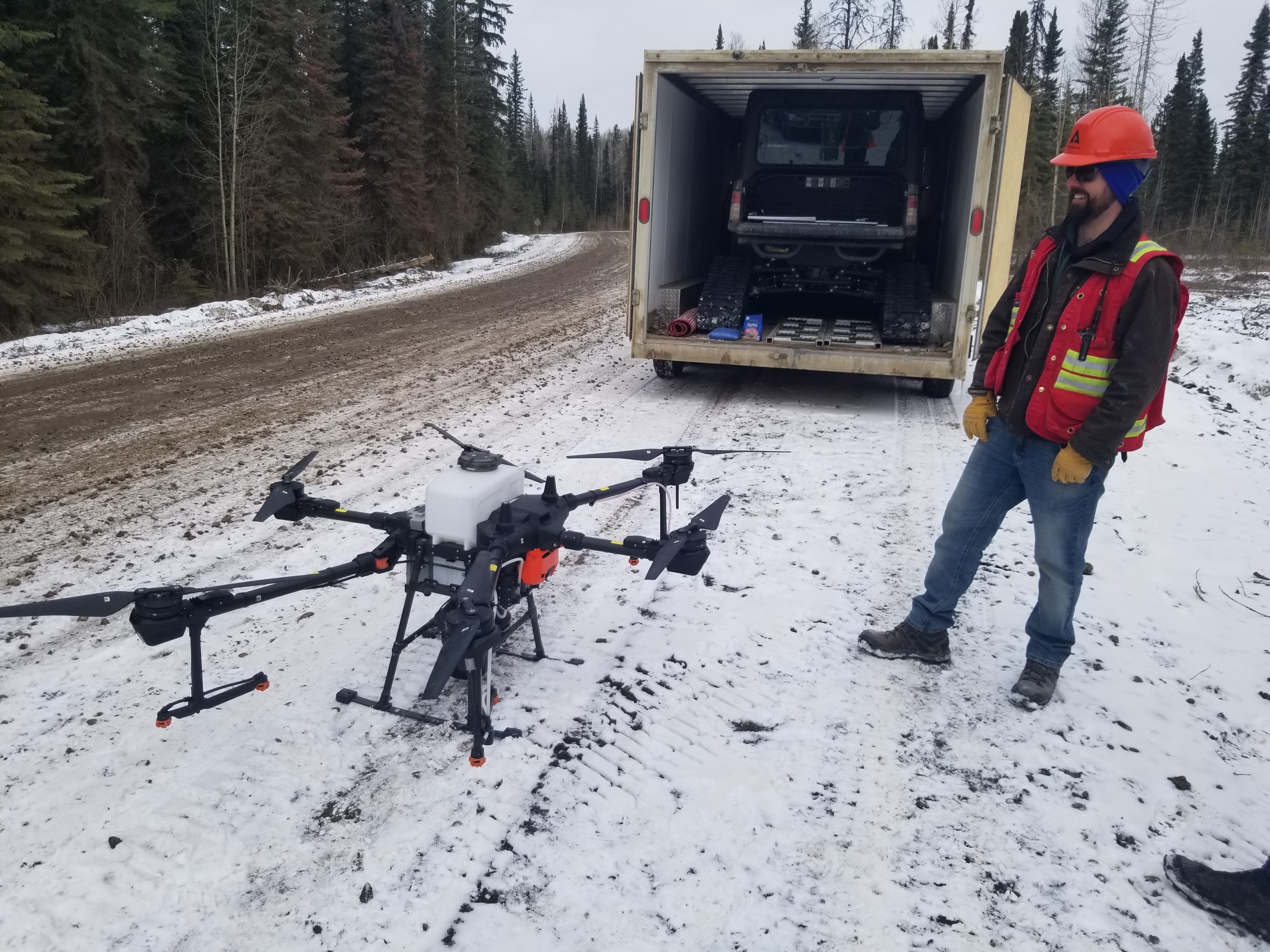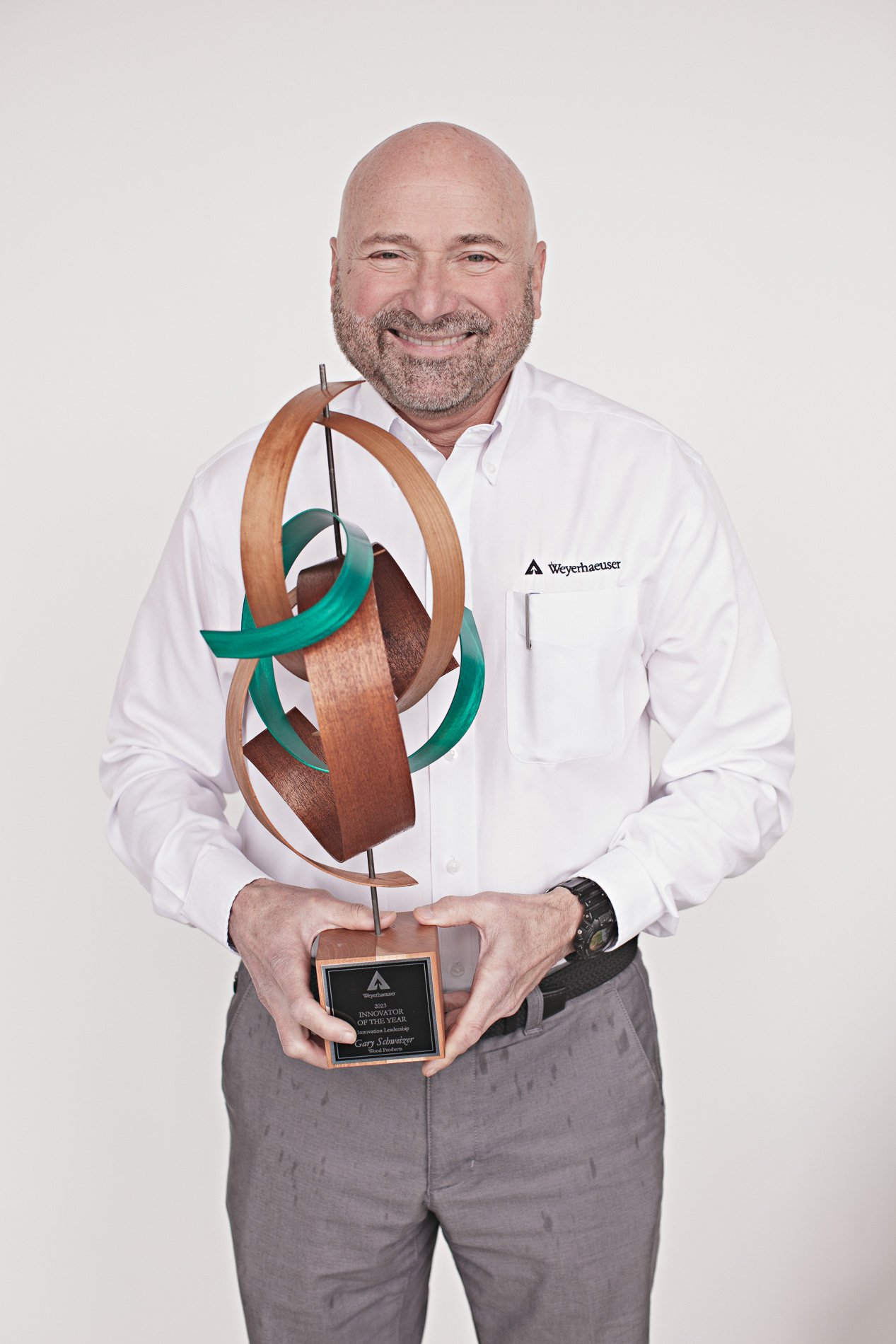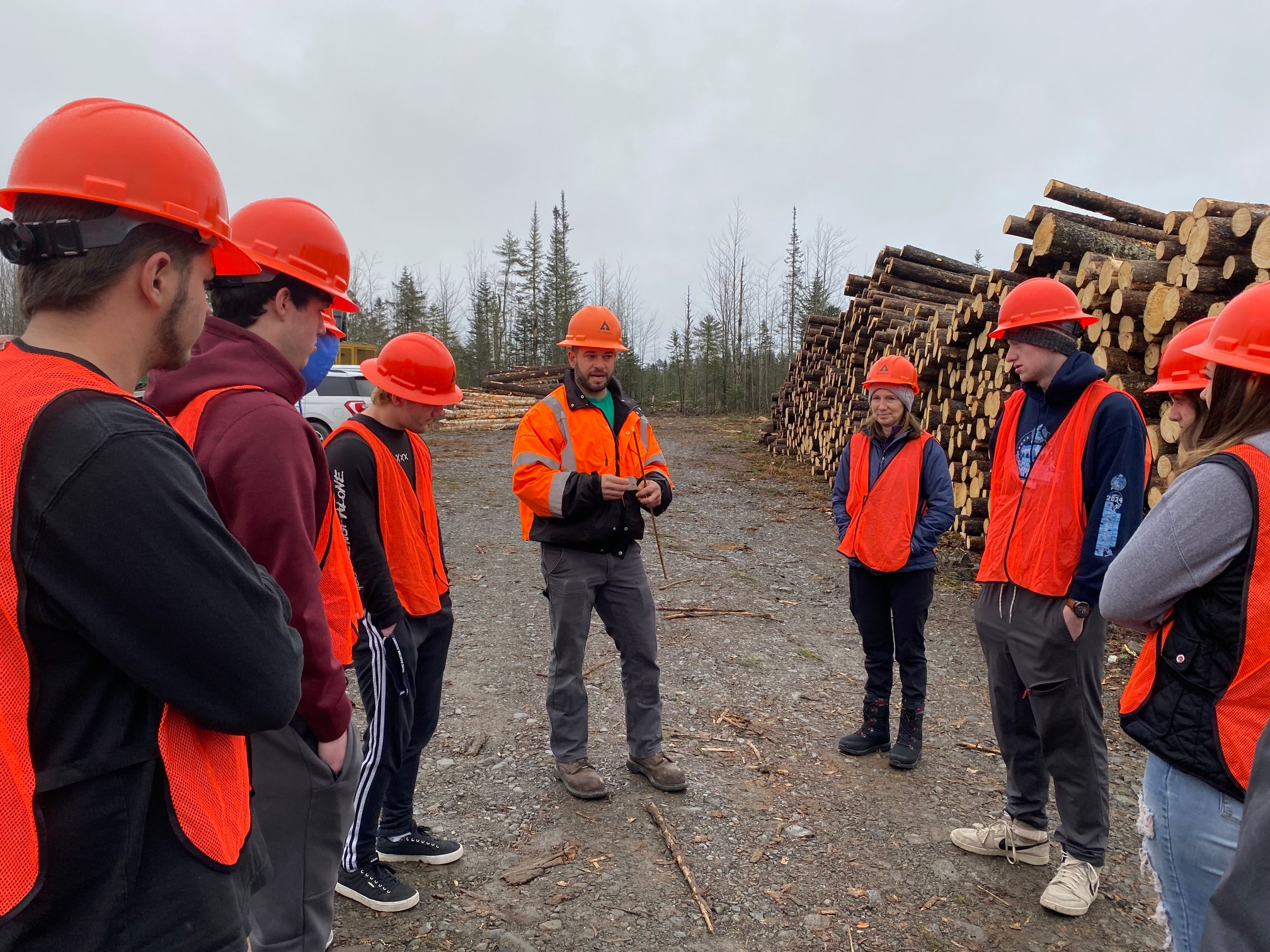
Tyler with a drone seeder the team is testing, showing the technology to Travis Keatley during his visit to Grande Prairie Timberlands last year.
Tyler Niles, silviculture forester in Grande Prairie, Alberta, didn’t just come up with one amazing idea. He’s responsible for a series of exciting and creative innovations — from sheep grazing to automated planting — that could make our operations in Canada both more efficient and more sustainable.
Tyler was recently recognized for his innovative spirit as one of five recipients of Weyerhaeuser's 2022 Innovator of the Year award. Launched in 2021, this annual award recognizes and celebrates employees who are driving improvements and fueling operational excellence through their ideas, actions and the innovative environment they help create on their teams.
“We often talk about innovation as a mindset — not a separate category in our daily work, but a way of thinking that guides our approach to every task or project,” says Brian Chaney, vice president of Engineered Wood Products and Innovation. “Tyler really embodies that mindset, and he was recognized for innovations he’s driving on multiple fronts. This is all terrific work that will benefit our company today and long into the future.”
An aerial view of a flock of 1,500 sheep penned up overnight before being herded through recently planted stands to eat competing vegetation.
INNOVATION AS A MINDSET
Though Tyler is involved in many innovations, most of his projects focus on two key goals of the company: reducing the use of herbicides in our silvicultural practices, and responsibly managing our timberlands so they remain healthy and productive for generations to come.
“We operate largely on government-owned land here in Canada, and we take that responsibility very seriously,” Tyler says. “I wanted to help kickstart imaginative new ways to reach our business goals while showing the Canadian people that we’re deserving of their trust.”
Tyler says his sense of curiosity drives him to learn about other industries’ innovative projects and then to think about how they might apply to forestry. Some ideas are clearly a good fit from the beginning, like adapting drone and satellite imagery technology from agricultural sectors. Others require a little more experimentation and creativity.
“Unwavering passion and collaboration are the essential elements of success,” Tyler says. “If I’m not 100 percent committed to seeing a new project through, it’s hard to ask a team to get behind me. I must remain open to feedback and criticism and never let my passion or my ego keep me from seeing a situation clearly.”
The Grande Prairie team has been piloting the sheep-grazing project since 2020.
BUILDING MOMENTUM
When Tyler gets an idea, he starts by discussing it with his team to see if it resonates. If they like or see promise in it, he takes the concept to management for approval. Then Tyler and his colleagues start the testing process and seek ways to overcome the hurdles that inevitably come up.
“I have to keep an open mind and be willing to make mistakes,” Tyler says. “If one idea doesn’t work, I learn from it and try again.”
Tyler gets a lot of help from his team in Grande Prairie, and he often collaborates with our Timberlands Strategy & Technology team to fine-tune details on individual projects. He also consults subject matter experts, both internally and externally, to validate and flesh out ideas.
“Innovation doesn’t happen in a vacuum,” Tyler says. “My small team puts up with my rambling about my ideas, and my managers give me the runway to explore them. Our company really fosters an environment of innovation, which inspires us to do the work.”
Tyler's curiosity around what can be adapted from other fields and from forestry practices in other countries drove him and his team to experiment with an automated seedling planting attachment fixed on an excavator to eliminate some of the laborious manual planting. Notice the seedling tops sticking out of the circular attachment.
FROM ANCIENT PRACTICES TO ADVANCED TECH
Tyler’s ideas have ranged from returning to ancient practices to pushing technology to new limits.
One project Tyler helped spearhead in 2020 replaces herbicide application with grazing sheep — along with crook-wielding shepherds and herding dogs. The sheep eat competing vegetation growing around newly planted seedlings, preventing them from being crowded out during the critical early stages of stand establishment.
“I recently got to hand it off to some of our newer employees, who are now running it,” he says. “We still have a couple years of research and trials to do, but I’m happy to have some great people taking the reins and running with it."
Other recent innovations focus on targeted herbicide application, which allows us to spray tightly controlled quantities of herbicide exactly where they’re needed.
Two related projects integrate GPS units for backpack spraying crews, and a GPS-equipped sprayer that can fit on a piece of heavy equipment called a skidder, allowing it to carefully spray several blocks in a short period of time.
“I’m most proud of the skidder work,” Tyler says. “It was a collaborative project with Western Timberlands and the Production Forestry team. Western Timberlands had already built a similar unit and was in the process of testing it, and I was able to work with Seth Carpenter and Eric Sucre to replicate it. It was an important step in our effort to strengthen cross-geography collaboration.”
That collaboration was especially helpful when Tyler and his team encountered the inevitable hurdles that come with launching a new innovation.
“Our first hurdle was finding the right contractor to partner with,” he says. “This had never been done in Western Canada before, so we needed to find a contractor as innovative as we are to move the project forward. Then there were design and manufacturing setbacks while trying to deliver something that was safe for the contractor and also met the environmental standards that Weyerhaeuser and the Alberta government set.”
The team persevered, and the skidder made its first successful run in 2022.
“To me, this project encapsulates what innovation is, from the collaboration between Weyerhaeuser geographies, the planning and innovation between us and our contractors, to the continued sharing of learnings and progress from the project,” Tyler says. “Innovation doesn’t have to be revolutionary in scale. Sometimes the biggest wins come from small improvements to existing ideas or processes.”
The skidder equipped with a GPS unit and spray arm. 'Not only does this technology allow us to be more precise than ever, it gives us a lot more data to learn from at the end of the season,' Tyler says.
TRANSFORMATIVE POTENTIAL
Tyler hopes his projects will inspire others to look at their jobs and processes in new ways and take the risk of submitting their own ideas.
“Some people associate innovation with huge world-changing ideas, like rockets to Mars or iPhones, but it can also be very small and simple,” Tyler says. “Sometimes those smaller ideas have an even greater compounding effect than the grand ideas that get all the attention.”


